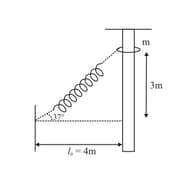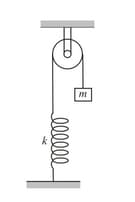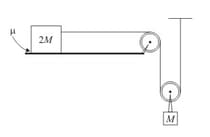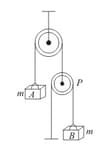A block of mass is released from the point in the figure. The track is frictionless except for the portion between points and , which has a length of . The block travels down the track, hits a spring of force constant , and compresses the spring from its equilibrium position before coming to rest momentarily. Determine the coefficient of kinetic friction between the block and the rough surface between and .
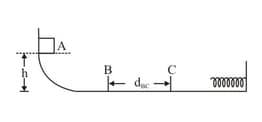


Important Questions on Work, Energy and Power
In the figure, the stiffness of the spring is and the mass of the block is . The pulley is fixed. Initially, the block is held such that the elongation in the spring is zero and then released from rest.
Find the maximum elongation in the spring
the maximum speed of the block .
Neglect the mass of the spring and that of the string. Also, neglect the friction.
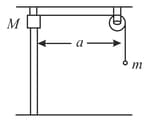
A spring-mass system fall freely from a height before colliding inelastically with the ground. Find the maximum value of so that block will break off the surface. Assume stiffness of the spring.
In an ideal pulley particle system, the mass is connected with a vertical spring of stiffness . If the mass is released from rest, when the spring is deformed, find the maximum compression of the spring.
The figure below shows two blocks of masses and , respectively. The coefficient of friction between the block of mass and the horizontal plane is . The system is released from rest. Find the velocity of the block of mass , when the block of mass has moved a distance towards the right.

